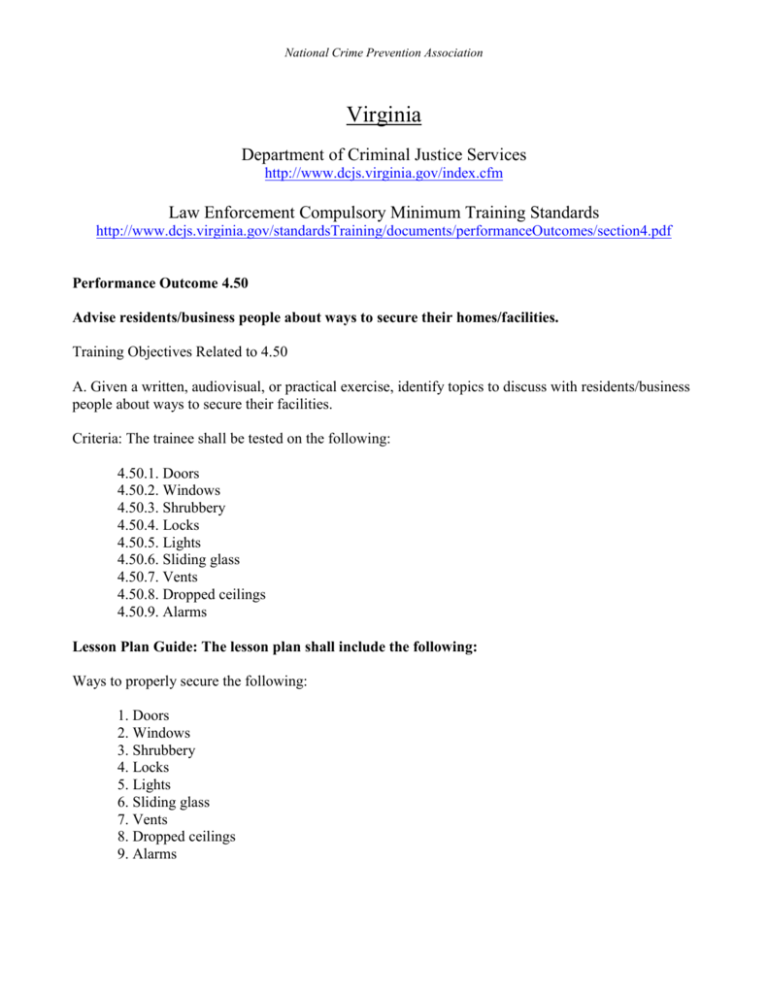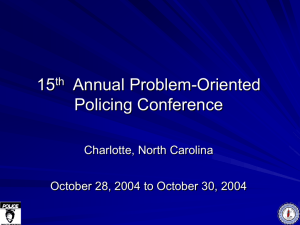National Crime Prevention Association
advertisement

National Crime Prevention Association Virginia Department of Criminal Justice Services http://www.dcjs.virginia.gov/index.cfm Law Enforcement Compulsory Minimum Training Standards http://www.dcjs.virginia.gov/standardsTraining/documents/performanceOutcomes/section4.pdf Performance Outcome 4.50 Advise residents/business people about ways to secure their homes/facilities. Training Objectives Related to 4.50 A. Given a written, audiovisual, or practical exercise, identify topics to discuss with residents/business people about ways to secure their facilities. Criteria: The trainee shall be tested on the following: 4.50.1. Doors 4.50.2. Windows 4.50.3. Shrubbery 4.50.4. Locks 4.50.5. Lights 4.50.6. Sliding glass 4.50.7. Vents 4.50.8. Dropped ceilings 4.50.9. Alarms Lesson Plan Guide: The lesson plan shall include the following: Ways to properly secure the following: 1. Doors 2. Windows 3. Shrubbery 4. Locks 5. Lights 6. Sliding glass 7. Vents 8. Dropped ceilings 9. Alarms National Crime Prevention Association Performance Outcome 4.51 Identify ways to assist in preventing crime. Training Objectives Related to 4.51 A. Given a written, audiovisual, or practical exercise, identify structured problem solving methods to identify and assist in preventing causes of crime, e.g., street lights, traffic patterns, lack of recreation, etc., Criteria: The student shall be tested on the following: 4.51.1. Identify the crime(s) occurring in an area 4.51.2. Identify root cause(s) 4.51.3. Identify local resources 4.51.4. Identify possible solution(s) Lesson Plan Guide: The lesson plan shall include the following: 1. Use of structured problem solving technique(s) 2. Identification of the crime(s) occurring in an area 3. Identification of the root cause(s) 4. Identification of possible resources 5. Identification of possible solution(s) 6. How to initiate action using a. Police b. Parks & recreation c. Zoning d. Commissioner of revenue e. Roads and grounds repair f. Highway signs g. Others as may be identified 7. Crime Prevention through Environmental Design program 8. Crime Triangle Analysis a. Desire b. Ability c. Opportunity








